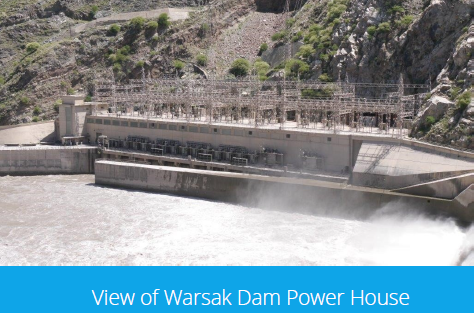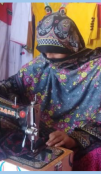Rehabilitation of 243 MW Warsak Hydropower Project

Duration: 2015-2025
Budget: €162 million (EU contribution - €4.5mn)
Others include AFD [€40M], KFW[€40M], EIB [€50M], GOP [€27.5M])
Location: Warsak Dam is located on RiverKabul, 20 KM East of the Afghanborder and 30 KM North ofPeshawar, Khyber Pakhtunkhwa.
Implementing Partners: Water and Power Development Authority(WAPDA)
Rehabilitation of the Warsak Dam is a crucial step to addressing the major power shortage facing Pakistan.The associated power plant was clogged due to heavy silt and power generation was reduced to up to 100MW - almost half its capacity. Under the European Investment Bank's (EIB) Asia Investment Facility - supporting Asia's transition to a greeneconomy - the EU signed an agreement with Agence Française de Développement (AFD) during 2014 forupgradation of Warsak Dam to increase output from 100 to 243 MW for another 40 years.
The challenge:
The Dam, constructed in 1960, contains dilapidated electromechanical equipment that has been damagedwith silt. Currently, the reservoir has lost 83% of its initial storage capacity and the power station is nowpractically operating run-of-river. Under the present operating conditions, the maximum load shared by thepower station is around 120 Mega Watt against the total installed capacity of 243 Mega Watt.
How do we address the challenge?:
The project is upgrading the powerhouse, de-silting the reservoir and enhancing capacity of WAPDA onhydrology and maintenance of the equipment. The rehabilitation includes modernization of the powerstation to increase capacity of the water reservoir and repair of Dam structure. WAPDA will ensure that allsix generating units are capable to operate efficiently and reliably for another 40 years.
Support to policy:
The EU's support will ensure the sustainability of the project by enhancing operational capacity through technical assistance. These measures will also enhance and strengthen WAPDA's operational and maintenance capabilities. They are also meant to help address Pakistan's climate change adoption issues such as flood management, glacier-melting monitoring and protection of watershed etc.
These measures will also help facilitate financing for environmental issues, mitigation of security issues through community development, mechanical workshop enhancement and flood/sediment management studies.
What can we learn from this project?
The project is a good example of a joint climate change action by the Government of Pakistan and several European development partners (EU, EIB, KfW, AfD).
EU in Pakistan
The European Union (EU) funds projects and programmes around the world in order to help addressing global and local challenges. The reduction of poverty and the respect of fundamental rights and freedoms are key objectives in this context.
In Pakistan, the EU is committed to a stable, democratic and pluralistic country that respects human rights and benefits from its full economic potential by supporting sustainable and inclusive development for all its citizens. The EU provides Pakistan with about €100 million annually in grants for development and cooperation. Among other issues, the EU supports Pakistan in its efforts to tackle poverty, increase education, promote good governance, human rights, rule of law and ensure sustainable management of natural resources. EU-funded projects are covering all of Pakistan with a special focus on Sindh and Balochistan.
The collaboration between the European Union and Pakistan is grounded in the Strategic Engagement Plan (SEP) signed in 2019. Areas of cooperation under the SEP include peace and security, democracy, rule of law, human rights, and migration but also sectors such as energy, climate change and science and technology.
The EU is one of Pakistan’s largest trading partners. The EU supports Pakistan’s integration into the world economy and its sustainable economic development, namely by granting it preferential access to the European single market under the GSP+ system since 2014. Under this scheme almost 80% of Pakistan’s exports enter the EU duty and quota free. In 2018, Pakistani exports to the EU were worth €6.9 billion.
In order to enjoy the trade preferences under GSP+, Pakistan needs to demonstrate progress on the implementation of 27 international conventions on human rights, good governance, labour rights and environmental protection.
Delegation of the European Union to Pakistan,
House 9, Street 88, G-6/3, Islamabad
Phone: +92 51 227 1828, Fax: +92 51 282 2604
Email: Delegation-Pakistan@eeas.europa.eu





